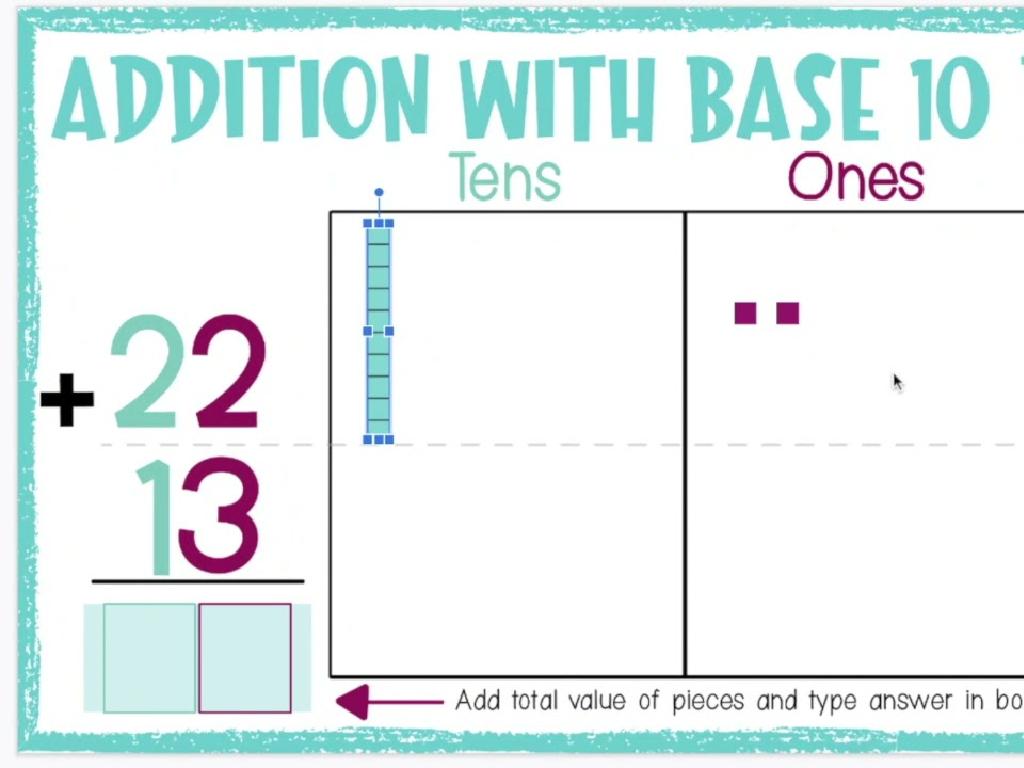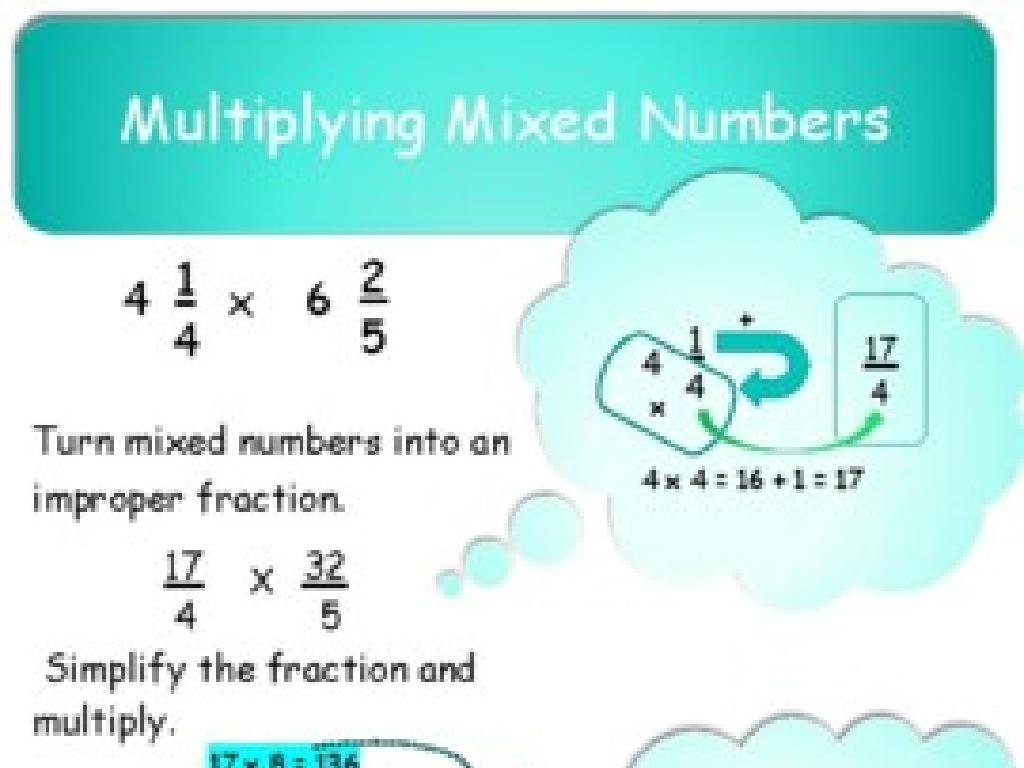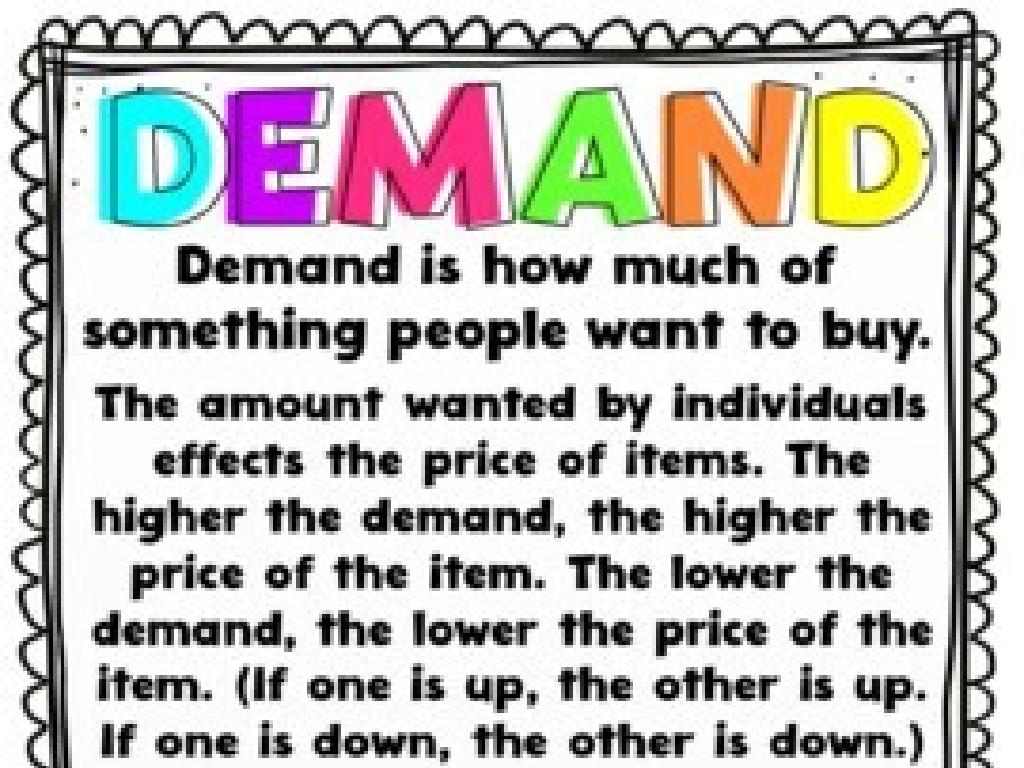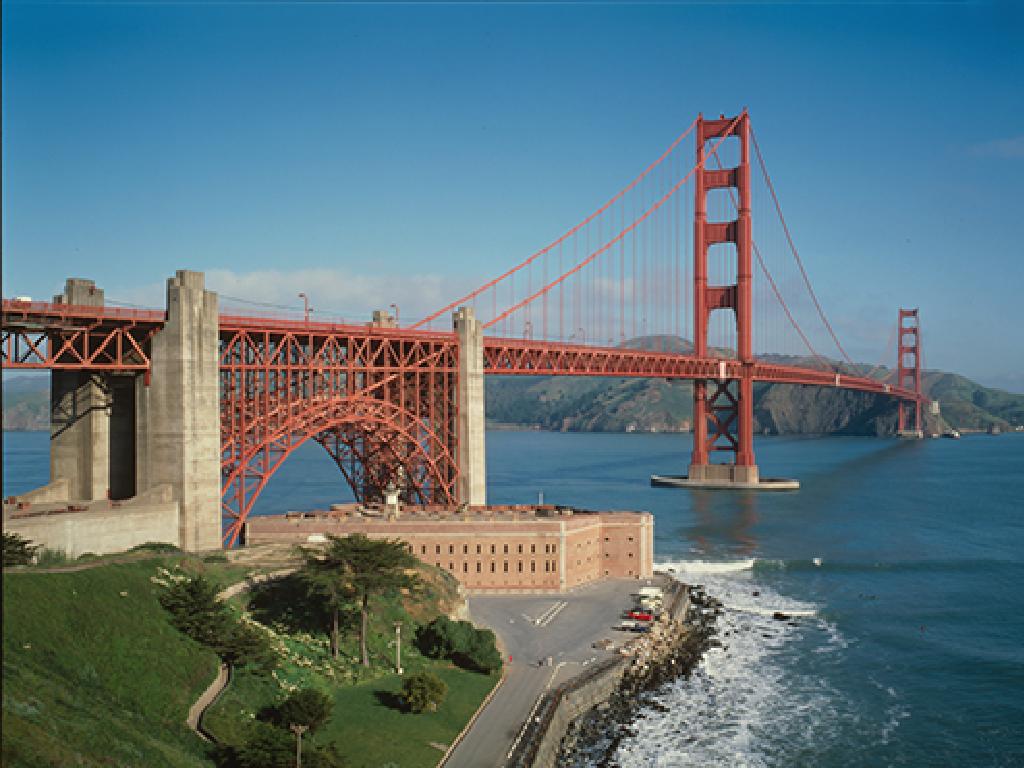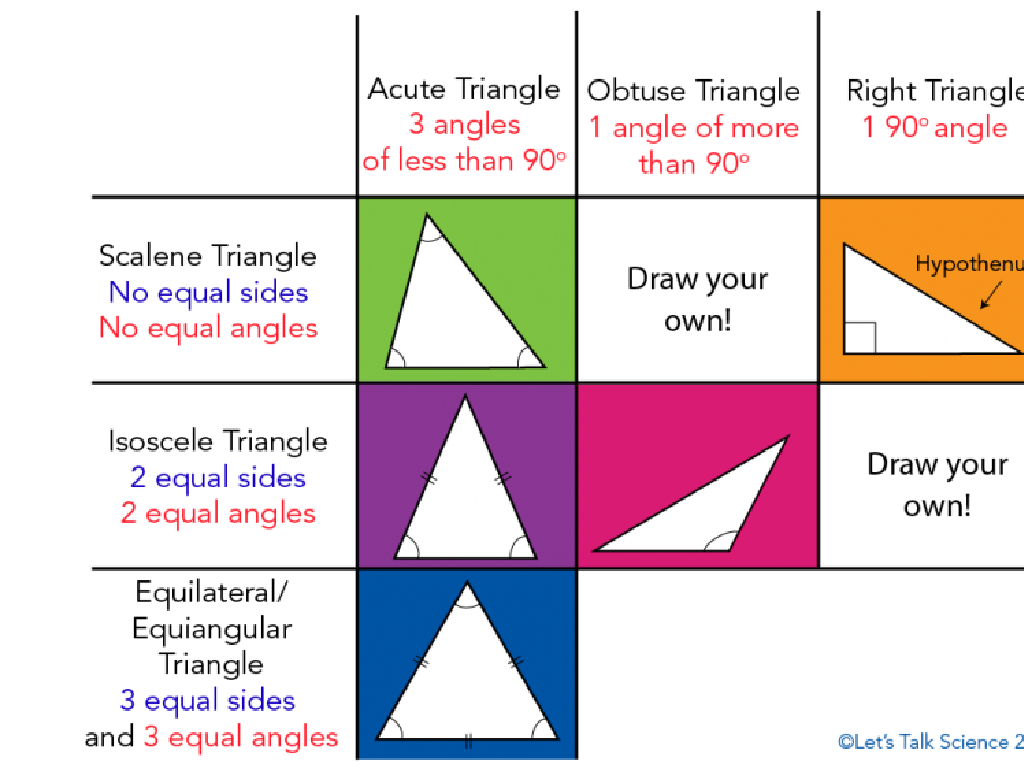Classify Rocks And Minerals
Subject: Science
Grade: Kindergarten
Topic: Earth'S Resources
Please LOG IN to download the presentation. Access is available to registered users only.
View More Content
Welcome to Earth’s Treasures!
– Become rock detectives today
– Learn about rocks and minerals
– Rocks are solid, minerals are building blocks
– Discover Earth’s resources
– Resources from Earth like water, air, and rocks
– Fun facts about rocks
– Some rocks sparkle, others are smooth
|
This slide is designed to introduce kindergarten students to the concept of Earth’s resources with a focus on rocks and minerals. Begin by engaging their imagination, encouraging them to think like detectives who are on a mission to explore and learn. Explain that rocks are the solid materials that make up the Earth’s crust, and minerals are the natural substances that rocks are made from. Highlight that these are all resources provided by Earth, which we use in many ways. Incorporate fun facts to keep the lesson interesting, such as how some rocks sparkle and others are smooth to the touch. The goal is to spark curiosity about the natural world and lay the foundation for understanding Earth’s geological components.
Exploring Rocks
– Rocks are made of minerals
– Just like a cookie has chips, rocks have minerals!
– Rocks: big, small, smooth, rough
– Some rocks are tiny like pebbles, others huge like a mountain!
– Rocks are all around us
– Look down on the ground, rocks are there!
– Importance of rocks in nature
– Rocks help make up the Earth we live on.
|
This slide introduces kindergarteners to the concept of rocks and their characteristics. Explain that rocks are composed of minerals, much like how cookies have different ingredients like chocolate chips. Show them a variety of rocks some small like pebbles, others large like boulders and discuss the textures, from smooth river stones to jagged mountain rocks. Emphasize that rocks are a common part of our planet and can be found everywhere, from the playground to the mountains. Highlight the role rocks play in nature, forming the solid foundation of Earth. Encourage the children to bring in rocks they find and like to share with the class.
Types of Rocks
– Igneous rocks from lava
– Like rocks from a volcano that cool down
– Sedimentary rocks from layers
– Made of sand, shells, and mud stuck together
– Metamorphic rocks change a lot
– They transform with heat and squishing
– Rocks are Earth’s treasures
|
This slide introduces the kindergarten students to the basic types of rocks as part of Earth’s resources. Explain that igneous rocks form when lava from a volcano cools and becomes solid. Sedimentary rocks are like a big cake made of different layers of sand, shells, and mud that have been pressed together over time. Metamorphic rocks have been changed by being heated and squished deep inside the Earth. Use simple language and relatable analogies to help the children understand. Show pictures of each type of rock and possibly bring samples for them to touch and feel. Encourage the children to ask questions and think about where they might have seen these rocks in their daily lives.
Exploring Minerals
– Minerals are in rocks
– They have crystal shapes
– Like tiny, shiny shapes you can see
– Made of different chemicals
– Everything is made of chemicals, even water!
– Examples: quartz, gold, salt
– Quartz can be in watches, gold is shiny, salt is in our food
|
This slide introduces the concept of minerals to Kindergarten students. Minerals are the building blocks of rocks and are found everywhere on Earth. They come in different shapes, sizes, and colors, and each has its own crystal structure. When discussing chemicals, relate it to substances they are familiar with, like water. Use tangible examples like quartz in watches, gold jewelry, and salt in food to make the concept relatable. Encourage the children to touch and see different minerals if possible, and ask them to describe the colors and shapes they see. This will help them understand that minerals are a diverse and important part of the Earth’s resources.
Let’s Classify Rocks
– Sort rocks by size
– Big rocks, small pebbles, or tiny grains of sand
– Sort rocks by color
– Brown, gray, red, or even sparkly colors
– Sort rocks by texture
– Smooth, rough, or jagged surfaces
– Understanding rock differences
– Sorting helps us see they’re not all the same
|
This slide is aimed at introducing Kindergarten students to the basic classification of rocks. Start by explaining that rocks come in many sizes, from large boulders to tiny grains of sand. Show them a variety of rocks and point out the different colors they can be, such as brown, gray, or red, and some may even have sparkles. Let them touch rocks with different textures, like smooth river stones or rough, jagged pieces of broken rock. Explain that by sorting rocks by these features, we can learn more about them and see how each rock is unique. Encourage the students to bring their own rock to the next class for a show and tell, where they can practice classifying it by size, color, and texture.
Rock Sorting Activity: Be a Rock Detective!
– Become a rock detective
– Sort rocks by color, size, texture
– Find rocks that are red, blue, or big, small, smooth, rough
– Classify rocks with friends
– Have fun discovering!
– Enjoy exploring different rocks and how they can be grouped
|
This slide introduces a hands-on activity for Kindergarten students to learn about rocks and minerals by sorting them into categories. Provide a variety of rocks for the students to examine and sort. Encourage them to observe the rocks closely and discuss their observations with their classmates. Guide them to group the rocks by color, size, and texture. This activity will help them understand the concept of classification and how it applies to natural objects like rocks. It’s also a great opportunity for them to practice teamwork and communication skills. Make sure to supervise the activity and assist the students in handling the rocks safely.
Show and Tell: My Favorite Rock
– Choose your favorite rock
– Tell us why it’s your favorite
– Is it shiny, smooth, big, or colorful?
– What type of rock is it?
– Is it igneous, sedimentary, or metamorphic?
– Remember, all rocks are special!
|
This slide is for a class activity where students will engage in a show and tell about their favorite rock. After a lesson on classifying rocks and minerals, students will sort through a collection of rocks and choose one that they like the most. They will then describe why they chose that rock, which may include its color, shape, texture, or any other interesting feature. Additionally, they will attempt to classify the rock type, reinforcing their understanding of the differences between igneous, sedimentary, and metamorphic rocks. Teachers should prepare a diverse collection of rocks for the activity and guide students in identifying the rock types. Encourage students to respect each other’s choices and to listen attentively as their classmates share. This activity promotes observation skills, descriptive language, and appreciation for Earth’s geological diversity.
Rocking Conclusion: Our Earth’s Treasures
– Rocks and minerals are valuable
– They build, create, and beautify
– Think buildings, sculptures, and sparkly rings
– You’re great rock detectives
– Thanks for exploring with us!
|
As we wrap up today’s lesson on rocks and minerals, emphasize their importance as Earth’s resources. Highlight how we use rocks and minerals in our daily lives, from constructing buildings and creating art to making jewelry. Acknowledge the students’ participation and efforts in exploring and learning about these natural treasures. Encourage them to continue observing the rocks they see every day and to share any interesting findings with the class in the future. Thank them for their curiosity and enthusiasm throughout the lesson.
Class Activity: Our Rock Collection Display
– Create your rock collection
– Classify and place rocks on display
– Sort rocks by size, color, or shape
– Share displays with the class
– Discuss what we’ve learned
– Talk about the differences between rocks
|
This activity is designed to be a fun and interactive way for Kindergarten students to learn about rocks and minerals. Each student will bring in rocks they have found and classify them based on characteristics such as size, color, or shape. They will then place their classified rocks on a display board. Once all students have their displays ready, they will take turns presenting their collection to the class, discussing the unique attributes of each rock. This will help them understand the diversity of Earth’s resources. For the teacher: Prepare a display area for the students, provide guidance on how to classify the rocks, and facilitate the discussion. Possible variations of the activity could include grouping by texture, using magnifying glasses to look closer, or even attempting to scratch test for hardness.

